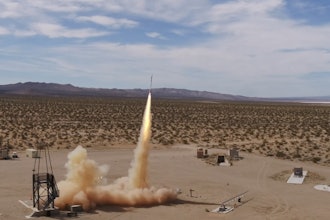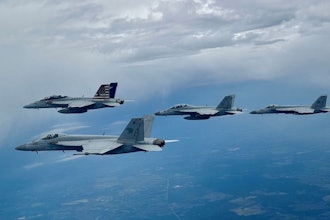Patches the Pup Gets a New Skull
University of Guelph researchers have given Patches, a nine-year-old dachshund, a new lease on life. The team 3D-printed Patches a metal plate that replaced most of the pup's cancer-plagued skull.
Patches's brain tumor was about the size of a baseball and it grew through her skull — about 70 percent of which needed to be removed. The prognosis would have been grim if not for the ambitious researchers. In previous procedures, it was possible to remove the tumor and then replace it with titanium mesh, however, according to veterinary specialists, the procedure was long and was cost prohibitive.
Researchers took a CT scan of the dog's head, and digitally mapped custom 3D-printed titanium replacement. They also mapped where and how the implant would be attached, essentially providing a dotted line that the veterinarians had to follow to remove the infected material. The team was working with a two millimeter margin of error — or else Patches's new plate wouldn't fit.
The piece was printed by ADEISS, a firm that specializes in 3D-printing medical devices. ADIESS is no stranger to 3D-printing new body parts for canines. The company previously build a custom jaw implant for a seven-year-old Bernese Mountain Dog using Renishaw additive manufacturing metal powder bed fusion technology
On March 23, the surgery took four hours, but Patches was outside a mere 30 minutes after the procedure.
What is crazy is that after all of this work, Patches received a new lease on life — and the potential for 3D printing in the medical field was never more apparent — but two weeks after the operation, Patches slipped a disc and her hind legs were paralyzed. Just tragic.
Toyota Patents Flying Car
On September 13, 2018 Toyota Motor Engineering & Manufacturing North America has filed a patent for a new flying car that has rotors on the wheels.
According to the patent, the dual-mode vehicle would transition between flight mode and land mode. The wheels are attached to a central pivot that lowers them to the ground when it’s in land mode (aka a car).
When it transitions to fly, the central pivot lifts the wheels above the chassis. Rotor blades deploy from each wheel, and the car takes off vertically.
It appears as though Toyota is going the vertical take off and landing (VTOL) route, rather than an octocoptor like the Koncepto Millenya we saw from an amateur engineer a couple of weeks ago, or a transition aircraft, like the Transition from Terrafugia, which has foldable wings that deploy in about a minute.
However, when it comes to time-to-market, Terrafugia is out front. While Toyota's concept is still a PDF, the Transition will begin pre-orders next month for around $300,000 to $400,000. The Transition is a roadable light sport aircraft, which basically means a plane that you can drive, whereas this Toyota concept has the ability to be a car in one mode and a helicopter in another.
Ford Debuts Autonomous Electric Semi-Truck
Ford has debuted it's vision for autonomous semi-truck.
Ford's subsidiary in Turkey, Ford Otosan, debuted the F-Vision this week at the IAA Commercial Vehicles show in Germany.
According to the company, the Turkish designers and engineers designed the F-Vision as the company's first concept car as it prepares for the future of mobility.
The autonomous truck will be battery-powered, however Ford didn't announce any production plans. So, right now, it's just a really expensive cartoon. It's fitting since, according to a report in New Atlas, Ford's designers admitted that the design inspiration for the F-Vision was comic book characters. You would think Vision, but I don't see it — maybe an early Iron Man, from the side.
The windows in the concept vehicle also have the ability to adjust the tint based on the brightness of the sun.
The truck concept does share some similarities with Nikola Motor's Nikola One hydrogen powered truck, and Tesla's autonomous Semi, which have already received orders from the industry.
Last year, the company said that it planned to spend $4 billion on the developing autonomous vehicle technology. Looks like the pockets might need to be a little bit deeper to get the F-Vision into production.
This is Engineering By Design.






















